
The Tour de France again produced a duel between Jonas Vingegaard and Tadej Pogačar, though few could have anticipated the gap that would ultimately form between the two outstanding favourites in the final week.
Then again, perhaps a race as attritional as this one was always likely to take a toll. Peter Sagan was riding his final Tour de France and he suggested he had never competed in one as intense as this, with only two days where the racing wasn’t full-throated from the very outset.
Indeed, Vingegaard and Pogačar’s running duel was such that they even found themselves on the attack in the opening kilometres of stage 10, which had been ostensibly billed as a transition stage, a day for an early break to sally clear. The Tour of 2023, however, rarely afforded such respite.
It was still, of course, a race of a thousand stories. Thibaut Pinot’s farewell in the Vosges will endure in the memory. Pello Bilbao and Matej Mohorič scored fine breakaway wins and spoke poignantly of the loss of Gino Mäder and the realities of their lives as bike riders. Jasper Philipsen dominated the sprints, while Mark Cavendish came close to adding to his own history in the race.
The dominant thread, however, was the remarkable contest between Vingegaard and Pogačar. Cyclingnews looks back at some of the moments that defined the race.
{kiosq_button:center}
Fast start sets the tone
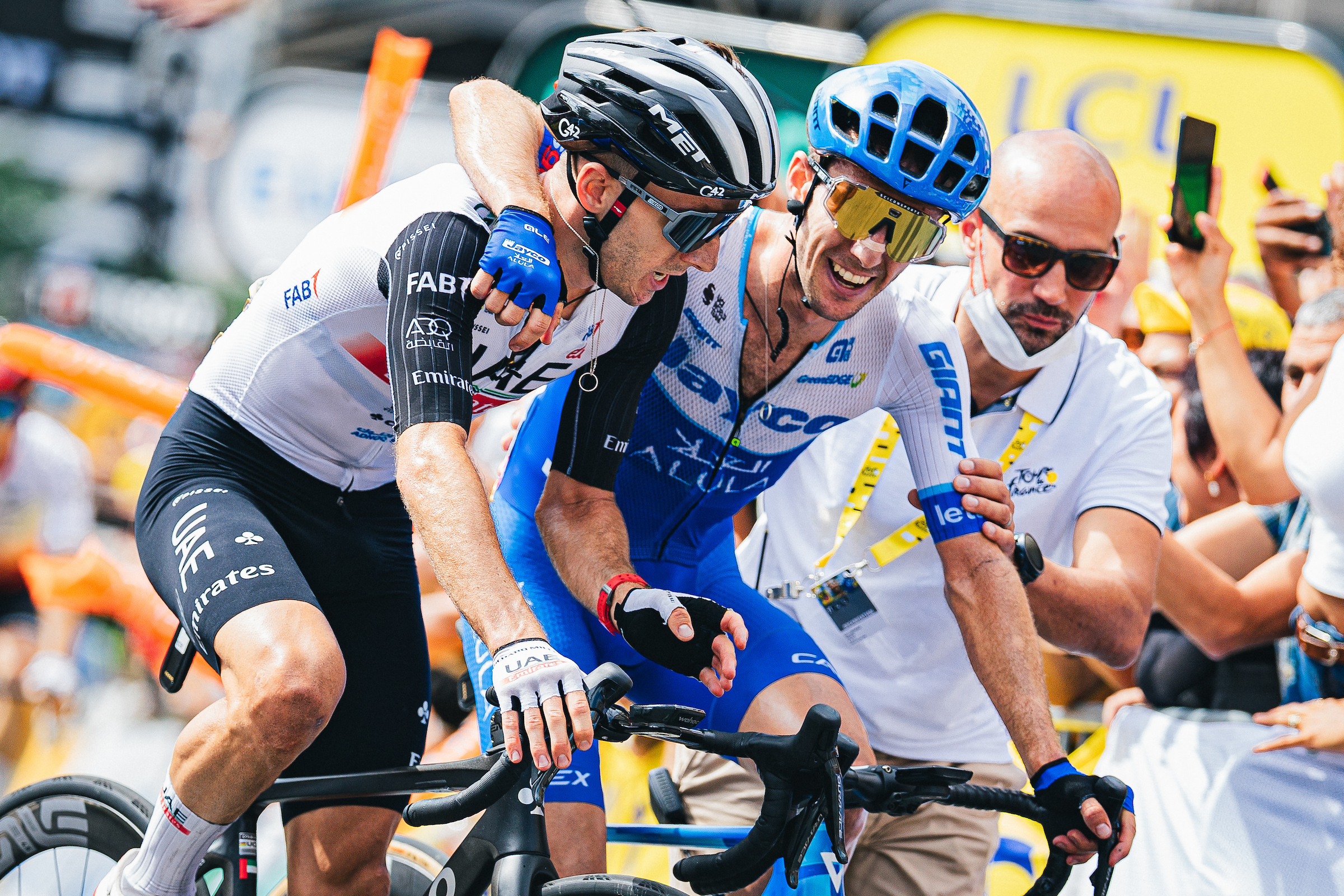
Just days before the Grand Départ, when UAE named Adam Yates as Tour de France co-leader for their team, it was widely regarded as a way of easing pressure on Tadej Pogačar given his uneven build-up.
The real limits on Yates’ role remained blurry until deep into the third week when UAE made a concerted effort to keep on the podium. However, that was just one rider in a bigger picture: back in Bilbao on the opening stage, right from the gun UAE’s collective gung-ho attitude to the Tour made itself very clear.
If any confirmation had been needed that it was the UAE squad who’d give Jumbo-Visma the biggest run for their money, in the three weeks to come, on the gritty, technical ascents in the Bilbao industrial hinterland, Mikkel Bjerg, Adam Yates and Pogačar provided that evidence in abundance.
When the UAE push came to shove towards the summit of the Pike, the last and most hotly disputed climb of all, defending champion Jonas Vingegaard was almost duty-bound to be up there in person. But in fact only he and stage 2 winner Victor Lafay (Cofidis) could follow UAE’s two co-leaders, Adam Yates and Pogačar.
As more riders then came across to the leading quartet on the false flat and fast descent that followed, Adam Yates soared away towards a solo victory and the first yellow jersey with only his brother Simon (Jayco-AIUIa) for company.
But the big news was that thanks to UAE, the main peloton had definitively shattered, ultimately leaving a group of 12 top favourites ahead at Bilbao. When Pogačar crossed the line with his arms held aloft at the celebration of UAE’s first of three stage wins, there was more satisfaction that he’d taken third and stolen a march on Vingegaard with bonus seconds. Yet perhaps most importantly of all, stage 1 was a day where UAE had made it plain that in their much stronger lineup compared to 2022, they meant serious Tour business.
The war from the gun wasn’t just at the front end of the bunch. The frenetic approach to the Pike saw the first GC contender, Enric Mas (Movistar) crash out with a broken shoulder blade, and Richard Carapaz (EF Education-EasyPost) suffered injuries that would see him lose 15 minutes then leave the race on stage 2 as well. Egan Bernal (Ineos Grenadiers) showed that any dreams of a return to the GC battle needed putting on hold for now, while both Romain Bardet (DSM) and Ben O’Connor (AG2R-Citroën) found themselves in trouble.
The fallout from UAE’s constant presence on the front was less severe on stage 2 over the Clásica San Sebastián’s most emblematic climb, the Jaizkebel. But as there were bonus seconds on offer at the summit, Bilbao’s display of strength had been so impressive it felt almost inevitable that a hyper-active Pogačar would zip off the front, then snatch yet more seconds at the finish with third place behind stage winner Victor Lafay (Cofidis).
This fussy, snappy, adrenalin-fuelled, all-out approach by UAE helped set the general tone of the next two weeks. It was instantly plain that Pogačar was determined to fight Vingegaard for every second on offer and would look to test his rival at every point possible. And with the glorious benefit of hindsight, it would be possible to read feelings of general insecurity over his underlying form into his persistent quest to gain even the slightest advantage.
At the same time, Vingegaard’s persistent trekking of Pogačar both on the Pike and again on the Jaizkibel strongly suggested that Jumbo-Visma’s policy of wearing down the Slovenian in the first two weeks rather than crushing him was in operation from the get-go.
But on stages 1 and 2, the way UAE were racing just felt like the suggestion of an even bigger Slovenian whirlwind to come.
But for whatever reason, the toughest Tour de France start in history also produced one of the most nervous, exciting opening chapters as well.
Pogačar bounces back in the Pyrenees
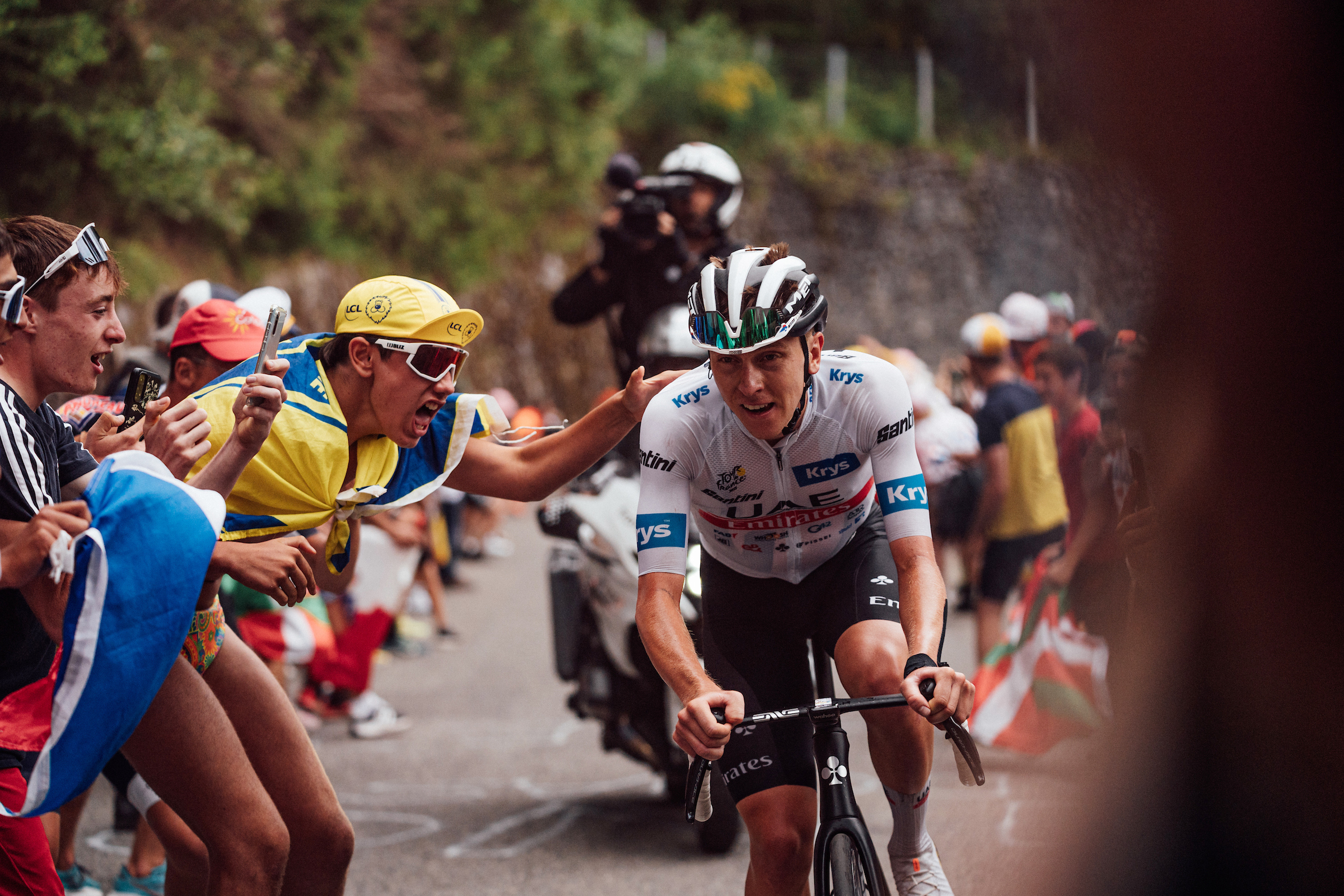
It’s very easy to forget, given the way the cards finally fell for Jonas Vingegaard and Tadej Pogačar in this year’s Tour, that less than a week into the race it had all looked like it was already over for the Slovenian.
Long before Pogačar’s now famous utterance of “I’m dead, I’m gone” on race radio on the Col de la Loze confirmed his surrender in GC battle, the first stage in the Pyrenees over the Col de Marie-Blanque had strongly indicated that the UAE Team Emirates leader was nowhere near the form of Jonas Vingegaard. On stage 5, the defending champion gained more than a minute on a struggling Pogačar, whose Basque Country fireworks fizzled out on a murky Pyrenean day. Even if the lead fell into the hands of Jai Hindley (Bora-Hansgrohe), Pogačar’s falling to sixth place and time loss seemingly gave Vingegaard the kind of momentum and advantage not even the Dane suspected he could gain.
However, just when the most pessimistic observers were predicting two and a half weeks of tedium as Vingegaard simply took control of the race whenever suited him, 24 hours later Pogačar bounced back. Big time.
In what was to prove the Dane’s most important defeat of the entire race, in the closing kilometres of stage 6 to Cauterets Pogačar laid down a devastating acceleration that Vingegaard simply could not match, and gained 24 seconds by the finish line.
It wasn’t a massive time gain, and Vingegaard actually took the yellow that day and never relinquished it over the following 15 stages. But Cauterets proved that Pogačar was not a spent force even before the Tour had really begun, and his process of chipping away at Vingegaard’s lead over the next two stages was underway as well.
Pogačar’s defiance gained even greater credibility given it had been Vingegaard’s Jumbo-Visma team, principally in the shape of Wout van Aert, that appeared to have wanted to lay down the law all the way over the Tourmalet. Vingegaard had laid down a searing acceleration towards the summit of the Pyrenees’ hardest climb that only Pogačar could follow, and then again some five kilometres from the summit. After Pogačar’s defeat on the Marie-Blanque stage, it felt like Vingegaard wanted to take a stranglehold on the race.
Instead, 2.6 kilometres from the finish, Pogačar lifted himself out of the saddle and instantly opened a sizable gap on the Dane. Ultimately this proved to be the high point of his battle against Vingegaard - but at the time it felt like a tide had turned.
Motorbikes block Pogačar’s sprint on the Col de Joux Plane
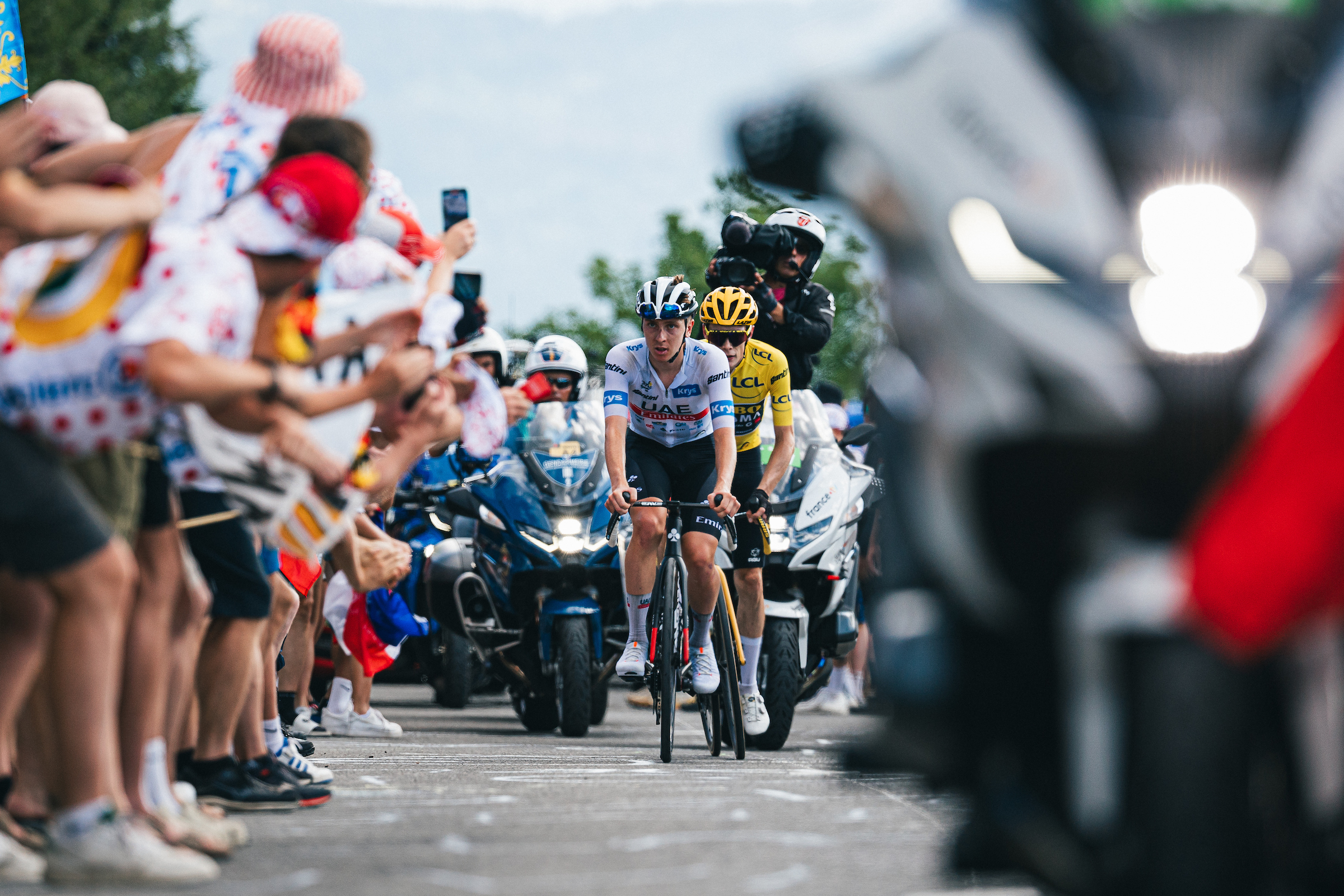
Everybody on the mountain knew what was coming when Pogačar lifted himself from the saddle 550 metres or so from the summit of the Col de Joux Plane on stage 14, not least Vingegaard, who could sense the Slovenian moving up on his shoulder.
An attack from a similar position the previous day on the Grand Colombier had seen Pogačar prise four seconds – plus another four in bonuses – from Vingegaard, and UAE Team Emirates directeur sportif Andrej Hauptman suggested afterwards that this kind of explosive effort was precisely where his rider could tip the balance of the contest.
At that point, their duel seemed destined to be decided by seconds, and Pogačar was diligently chipping away at his early deficit. Unlike in 2022, when he simply couldn’t shake off Vingegaard, Pogačar’s accelerations were now consistently achieving a degree of separation on this Tour, even if the Dane always managed to limit the damage.
It all meant Pogačar was just nine seconds down coming into stage 14, and although Jumbo-Visma dictated terms for most of the day, it was UAE Team Emirates who seized the initiative on the Joux Plane, where there were precious bonus seconds on offer at the top. Vingegaard withstood Pogačar’s initial onslaught, but he was braced for a more severe impact as they approached the bonus sprint at the summit.
The pair of motorbikes travelling a small distance in front of the two leaders, however, were unprepared for Pogačar’s sudden launch. Or perhaps more accurately, the sheer volume of fans and lack of barriers meant they were simply unable to get out of the way quickly enough. When Pogačar reached them, barely 40m into his effort, he was forced to brake and desist.
Worse was to follow for Pogačar, who was then caught flat-footed in the closing metres of the mountain, where Vingegaard outkicked him for the full quota of bonus seconds at the summit, temporarily adding three seconds to his advantage in the overall standings. Pogačar would outsprint Vingegaard for second place in Morzine to cut the overall deficit to ten seconds once again, but that did little to temper the furore.
In the moment, with the Tour being billed as the tightest since Greg LeMond and Laurent Fignon’s eternal 1989 duel, the Joux Plane motorbike incident felt as though it might distort the outcome of the entire race. Vingegaard, mind, continued to quietly insist the race would be decided by minutes rather than seconds.
Vingegaard’s time trial exhibition
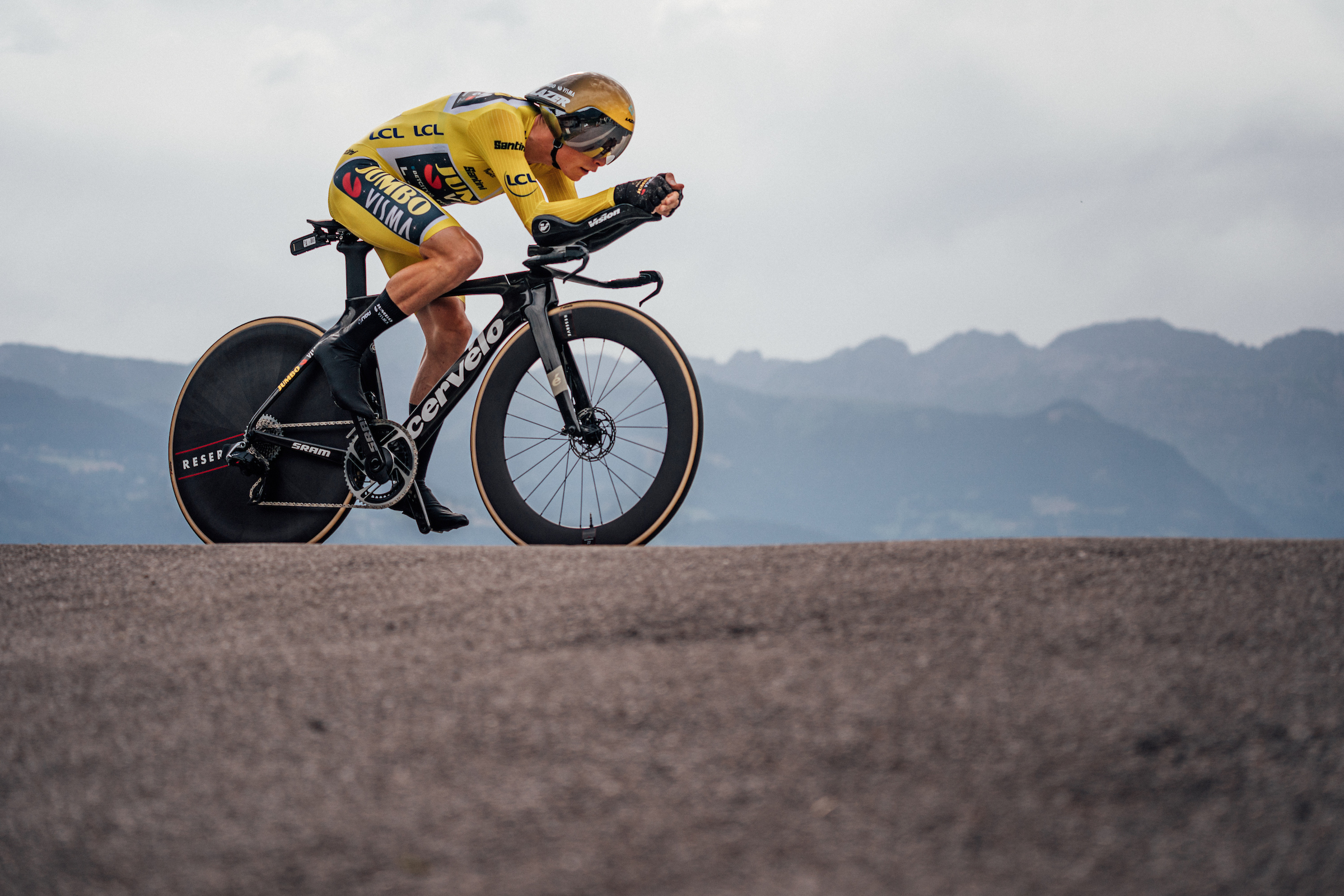
When the Tour route was announced last October, the mountain stages drew the eye. The Pyrenees came early, the Massif Central and the Jura featured ahead of some redoubtable days in the Alps, and there was a potentially explosive grand finale in the Vosges. It was all too easy to overlook the significance of the meagre ration of 22.4km in time trialling, all concentrated in stage 16 to Combloux.
As the race drew on, however, it became increasingly likely that the individual test would serve as something of a tiebreaker between two men who seemed to have one another’s measure, more or less, when the road climbed. Pogačar had a 6-3 head-to-head record in time trials against Vingegaard over the years, but it wasn’t clear how relevant that track record would be to this hybrid test, which included the Côte de Domancy.
Most observers reckoned that Vingegaard and Pogačar would place first and second in the time trial, but it was hard to say in what order. The gap, most agreed, would still be measured in seconds rather than minutes.
And then Vingegaard went out and showed that everything we thought we knew about cycling was false.
He was already 16 seconds ahead after 7km, almost doubling his lead to 31 seconds by the 16km mark. On the short Côte de Domancy, which he tackled on his time trial, Vingegaard put another 34 seconds into Pogačar. In just 22.4km, he gained 1:38 on Pogačar, dominating his rival in every facet of the course.
All told, Vingegaard was almost 2kph quicker than his rival, and Pogačar wasn’t exactly standing still. The Slovenian took second on the stage, while third-placed Wout van Aert – hardly a slouch against the watch – was 2:51 down. Vingegaard’s performance was from an entirely different stratosphere. Or, as L’Équipe’s loaded headline the following day put it: “From another planet.”
By then, Vingegaard and Pogačar’s supersonic climbing displays had already raised questions given that they had beaten the 30-year-old record for the ascent of the Col du Tourmalet. “I fully understand the scepticism and I think we have to be sceptical because of what happened in the past,” Vingegaard said in Saint Gervais after stage 15, striking a conciliatory note.
Jumbo-Visma manager Richard Plugge was a little more indignant on Vingegaard’s behalf, insisting that the hefty winning margin was the result of the team’s season-long focus on the stage. He also claimed his team had already demonstrated their bona fides. “We open our doors always, and I think that especially journalists should put a little more effort into [analysing] what’s happening,” he said.
But perhaps the key questions should be directed elsewhere, namely to the UCI. Since the governing body put doping controls in the hands of the ITA at the start of 2021, not a single rider has tested positive in the men’s WorldTour, while the biological passport has not successfully prosecuted a top-level rider in years.
In short, it begs the same question we asked this time last year: does this mean doping has been eradicated or is the testing simply not adequate?
Until such doubts are assuaged, the robust and repeated questioning of Tour winners’ credibility will inevitably continue.
‘I’m gone. I’m dead’ – Pogačar’s challenge ends on the Col de la Loze
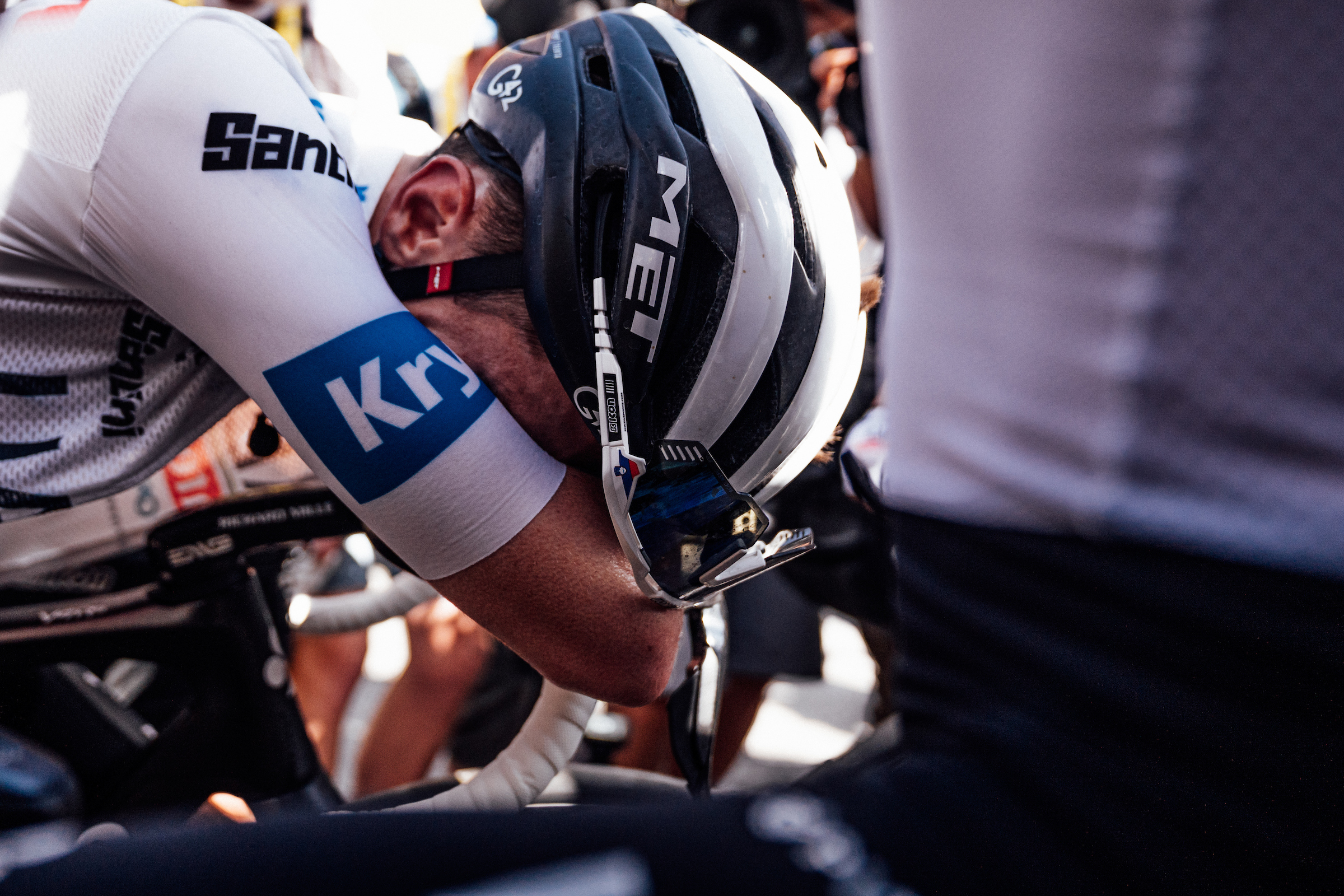
In truth, the race was already over after the Combloux time trial, but Pogačar’s remarkable gifts – and his refusal to lay down arms – meant that there was still the prospect that he might at least make things uncomfortable for Vingegaard in the final days of the race.
Those illusions faded about 8km or so from the summit of the Col de la Loze on stage 17, when Pogačar reached for the radio and told his team the dream was over: “I’m gone, I’m dead.” Vingegaard, seeing his rival floundering, didn’t need a second invitation to pile on the pressure.
The remainder of the day was an ordeal for Pogačar. A 50m deficit became five minutes by the top of the climb and almost six at the finish over the other side in Courchevel. At one point, even his place on the podium looked at risk. He endured defeats on the Col du Granon and Hautacam at last year’s Tour, but this was the heaviest yet.
The eternally upbeat Mauro Gianetti preferred to focus on Pogačar’s resilience in completing the course and saving the podium spot, and the UAE Team Emirates manager had further reason for calm when his rider won at Le Markstein on stage 20 and Adam Yates secured the third step of the podium.
Pogačar’s second straight Tour defeat does, however, beg questions about his approach to the 2024 race. The Slovenian’s remarkable dexterity carried him to victory at the Tour of Flanders, Flèche Wallonne, Amstel Gold Race and Paris-Nice in the Spring, but it’s hard to shake off the feeling that he later paid a price for those unsparing efforts in July.
UAE have understandably pointed to the broken wrist Pogačar suffered at Liège-Bastogne-Liège as the biggest hindrance to his preparation, but it will be fascinating to see if they also consider diverting him towards a more traditional Tour build-up in 2024. Pogačar remains the best cyclist in the world, but Vingegaard is the best cyclist in July. He might have to do something different to change that dynamic.
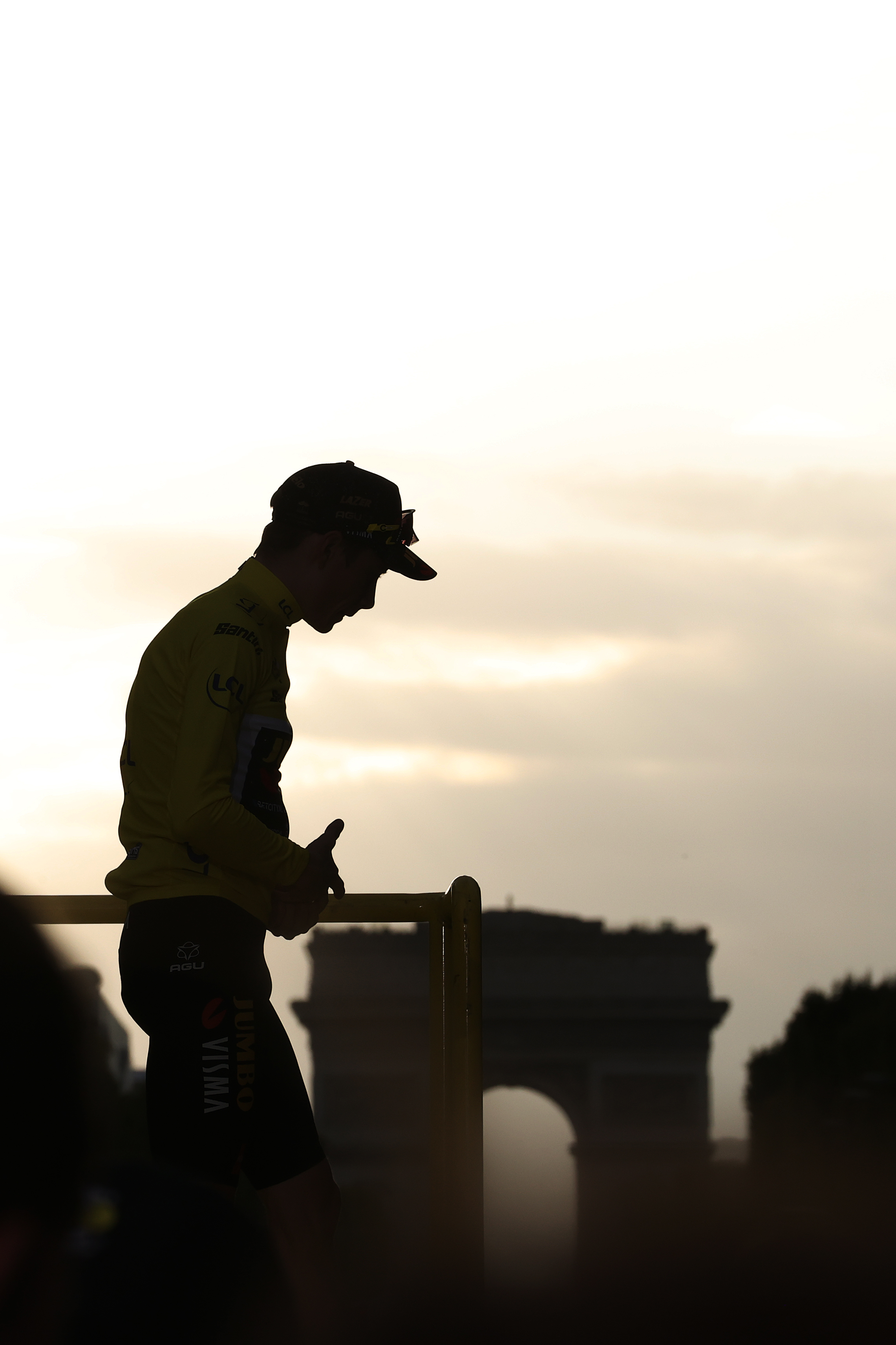

{kiosq_button:center}







